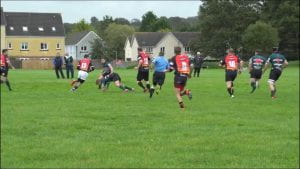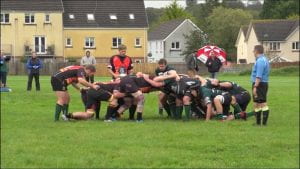During this session, I was pitchside for the men’s rugby team for 3 hours due to one of the injuries that occurred, the treatment and the duration of time it took for the player to be moved from the pitch the game went on slightly longer than it usually would. The first treatment of the game had me providing freeze spray on one of the player’s shoulders to help ease the pain of arthritis. As a therapist, this left me questioning if this was really working or if the player was psychologically thinking it was working and therefore able to mask the pain and play on. Upon doing some research after the game it was clear although limited evidence, freeze spray can help to relieve aches and pains within the first 72 hours of the injury occurring, however, because this was arthritis which is a chronic condition, does it have the same effect. Kaur and Harikumar (2012), stated that freeze spray has been proven beneficial when treating rheumatoid arthritis and therefore this treatment may have more effects aside from the psychological effects.
the second injury in this game included a large collision between one of our players and the opposing team resulting in our player being knocked unconscious. After finally regaining consciousness, the player was dazed experiencing pain in the head and when getting experienced a loss of balance and therefore was taken off to be assessed following signs of concussion. They will be SCAT5 tested in the following training session on 15/10/19 and compared to their baseline to see if they are safe to play after being assessed by a doctor to be sure.
The third and final injury that occurred during this game was a potential sprained ankle the player went down and immediately their ankle began to swell up and movement was limited. The player was taken off the pitch and ice was applied to the ankle to help reduce swelling and pain. After 15 minutes of ice being on the ankle the swelling had reduced considerably after 15 minutes of the ice being removed from the ankle (to create the hunting response) the ankle had swollen back up which are signs you would expect to see when dealing with a sprained ankle, however, this player will have to go to A&E to be sure that they haven’t done any other damage and if they have sprained it what grade sprain it is to be able to treat them correctly.
Areas for improvement:
- An area for improvement for this game would be to ensure that I am on the pitch quicker when a serious injury occurs regardless of the play going on around me. I must be cautious of the play going on as well as my own safety, however, when in a situation when a player has been knocked out I must be there immediately to assess the situation and provide immediate first aid.
- As this was my first game I am still learning how to react to things pitchside, however, my knowledge of injuries could do with being increased so that I am aware of different signs and symptoms associated with different injuries and therefore I am able to treat more efficiently as I can determine roughly what the injury could be.
- Although I knew the hunting response, it would be good to do some further research around it and know exactly what? why? and how? things happen and how the body responds in this way.
Reference:

